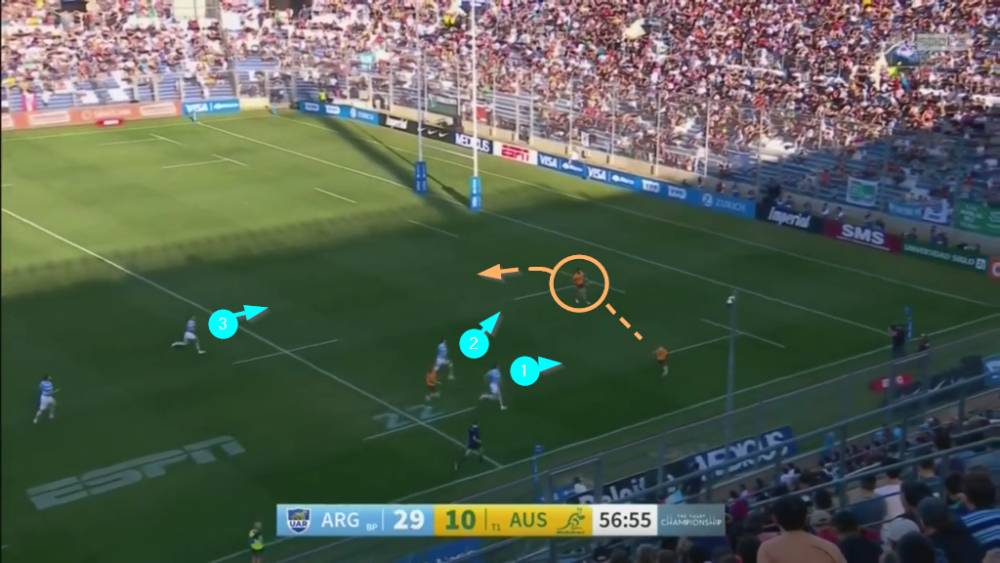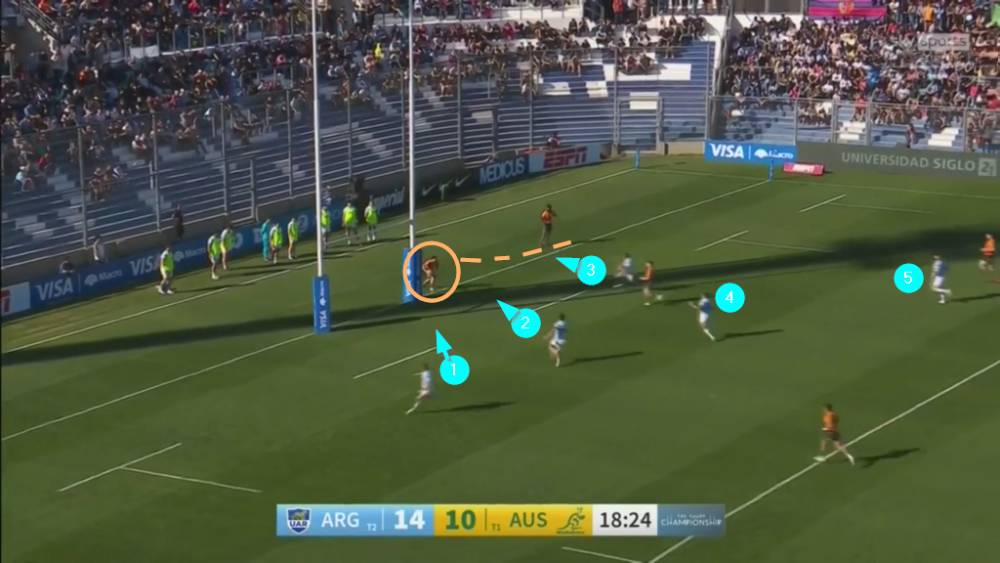
It is an eerie experience to meet a true rugby man at the venue when there is no match on. No Welsh folk ‘tall hats’ or 20-foot daffodils bobbing in the air, no screaming for hand-shakes and selfies from the fans. We met by the underground car park outside the stadium, and ‘Ted’ turned slowly to face the entrance to his old gladiatorial arena. There was a wistful pause, nothing was said.
It was as if the seething mass of matchday expectation came flooding back to him, all at once. For one long moment, that underground car park was a Marabar cave of ghostly echoes from his past life in Wales.
We stopped at the Angel Hotel a few hundred yards away for lunch, and as the waitress uncorked a good bottle of Malbec from the Uco Valley in Mendoza, we hunkered down for a few hours of solid rugby talk.
How do you measure the quality of a team? For Ted, it was one body of men or women filled with mana – but if you wanted to find weaknesses in it, you looked towards the joints, the sensitive tissue where one piece of bone or muscle joined to another.
‘The Joint Theory’ is the basis of sound analysis of the game. There has to be a strong linkage between different units within the whole. For example, a fundamental way of evaluating the quality of a defence is how well the number 7 connects to his number 10 from lineout or scrum.
Can they run at the same speed when challenged? Do they have an instinctive understanding of how to work together when the attack tries to separate them? For the better part of a decade, that was Richie McCaw and Dan Carter, and it was the best defensive ‘seam’ anywhere in the world. A rich seam of gold for the men in black, that is.
Nick Bishop joined former England coach Stuart Lancaster and Harry Jones for a special edition of The Roar Rugby Podcast
When I was preparing an analytical report for Graham Henry ahead of the 2001 British & Irish Lions tour of Australia, one of the joints I felt we could attack was the linkage between the likely Wallaby full-back Chris Latham and the defensive line ahead of him.
Great player though he was, if you could isolate Latham one-on-one on the outside of the D, he could be beaten.
If you kicked on to him directly, he was 100% under the high ball, but if you dragged him five or 10 metres upfield on to the catch first, the percentage of success dropped like a stone.
Perhaps we should have done more to keep Chris in the team, because he was dropped for Matt Burke after the very first Test at the Gabba! The Argentine coaches used a very similar theory to attack the joint between the Australian defensive line and the backfield at San Juan, and it was not their only area of success.
The joint between Darcy Swain’s lineout calling and execution was also poor at some key lineouts in the Pumas half, with the Wallabies looking to make a kill.
Both of these positions would have yielded seven points in the first game in Mendoza, but in San Juan the Wallabies came away with nothing. The second instance is instructive: it was the only time that Swain called Rory Arnold’s number in the match, and you do not need all of those complex manoeuvres to get the ball to his imposing 6 feet 10 inches frame. Just throw the ball to a rarified height, where only he can go and get it.
After last week’s mature lineout performance, the Wallaby calling dropped back to kindergarten. Rory Arnold did not win one own-ball lineout, and despite his pre-eminence as a poacher in the French Top 14, he was only required as a lifter for Swain and Jed Holloway on the Pumas throw. He never got to contest in the air once.
If not for lineout, why was he in the side at all? The stability and sureness of purpose added by Matt Philip was sorely missed, and he cannot come back quickly enough for the home games against the Boks.
Argentina’s change of plan with ball in hand worked a treat, with the Wallabies apparently unprepared for the coming attack on the seam between their defensive line the backfield via the boot. Michael Cheika successfully deconstructed himself, and the number of in-play kicks doubled from 15 in Mendoza to 29 in San Juan.
As Wallaby half-back Jake Gordon commented during the half-time interval:
“What we found interesting is they changed kick plan, they’ve gone into contestable kicks, and they put us under a lot of pressure there.
“What we noticed against Scotland, and last week, they seem to kick a lot of ‘pill’ quite long. And what they’ve done today is they’ve kicked a lot off nine and they made it contestable.
“We need to check the runners coming through and let our catchers get a clean catch because at the moment, it’s very highly contested and they’re getting tap backs.”
Australian head coach Dave Rennie summarized it crisply:
“They scored four tries with kicks – two in behind us and two in the air – so we didn’t do a good enough job around that. We created plenty of opportunities and weren’t clinical enough or lacked a little bit of patience.”
It was always going to be risk trading off Tom Wright’s ability on the counter against his weakness in the air at full-back, and I felt before the first game that Jordie Petaia represented a closer match for the photo-fit modern full-back (England’s Freddie Steward) than the Brumbies’ man.
And, so it proved:
These are the ‘Chris Latham’ instances I referenced earlier, with the full-back drawn forward into a receiving position where he is under challenge somewhere in between the backfield and the defensive line. Tom Wright never proved he was a reliable foundation-stone of defence in these situations, and eventually the tipping point arrived in the 36th minute of the first half:
Argentine right wing Emiliano Boffelli prises the ball out Wright’s grasp in the air, and it took a miraculous recovery tackle by Marika Koroibete to deny the Pumas man over the Australian goal-line. The escort service is thin to the point of non-existent, with number 13 Len Ikitau offering any blocking in front of the ball as the Pumas pour through. Even if Boffelli had not made the line himself, Juan Cruz Mallía was the first player on either side in support.
Tom Wright’s decision-making process at the back does not inspire confidence, but rather apprehension:
In this scenario, the Australian backfield has to accept that it has been corralled into a corner and the runback option is an unlikely possibility:

Wright should not be holding width and looking for the runback from his own goal-line, but moving closer to James O’Connor to provide support at the ruck. In the event, he waits so long that Tate McDermott gets back to become the first cleanout instead of Wright, and that means an Argentine turnover at the tackle.
Here is another example:
Again, Tom Wright chooses to run back from underneath the shadow of his own posts despite the presence of five Argentine chasers and with only one man in immediate support (Marika Koroibete on the left):

Eventually Marika makes a cracker of a clearing kick beyond halfway, but the play could just as easily have been called back for an obstruction penalty on the Pumas number 7 Marcos Kremer.
There was a sense, right from the beginning of the game that the Australian backfield was expecting to be able to play their way out on the kick return via the miracle pass or run.
Wright looks ready to receive the offload and Jordie Petaia is happy to deliver it, and a critical error almost inevitably results. Just be solid in that joint, take the ball into contact, support and win the ruck ball back. You do not have to be a hero on every play.
A copycat kick into the backfield/defensive line joint produced another try, leaked away far too easily for comfort by the Wallabies:
There is just far too little interest and urgency in filling the space which represented a such a heavy area of investment for the Argentine attack.
The end of the game was suitably symbolic, with Australia giving up all pretence of backfield defence on the Pumas’ final try:
In reality, they had surrendered the space behind the front line to the Argentine kicking game a long, long time ago in San Juan.
Summary
There is one item of good news for the Wallabies. The next opponent on their Rugby Championship menu, the Springboks, will be sure to bear down on the Wallaby defence between backfield and front line with their kicking game just as hard, if not harder than the Pumas did in San Juan.
If that zone has not received the right amount of coaching attention in the interim, and the necessary adjustments made by 27th August, they probably never will be. The game showed that Tom Wright is a luxury Dave Rennie simply cannot afford at full-back, so either Jordie Petaia needs to move inside, or Reece Hodge has to shift from bench to starter, or Andrew Kellaway has to return from injury.
All credit to Michael Cheika. He strayed from type, and his Pumas doubled the amount of kicking they produced in Mendoza. With the Australian lineout slipping back from Rembrandt to paint-by-numbers in the space of a week, it was the Argentine drive which was the more effective of the two.
After being picked for lineout, Rory Arnold was completely ignored as an own-ball target. Moreover, he only got to lift his inferiors on the opposition throw rather than to make a leap himself. Matt Philip cannot come back quickly enough as lineout caller.
The ’joints’ of team are what mattered to Sir Graham Henry, and right now there are too many Wallaby limbs likely to experience organ failure under pressure. We do not know what the quality of movement will be from one week to the next. One week a 40-point win, the next a 40-point loss. You have to be ‘solid in the seams’, show a sheer face to the opponent, with no chinks in your armour. I am sure Ted would raise a glass to that thought.

Leave a Reply